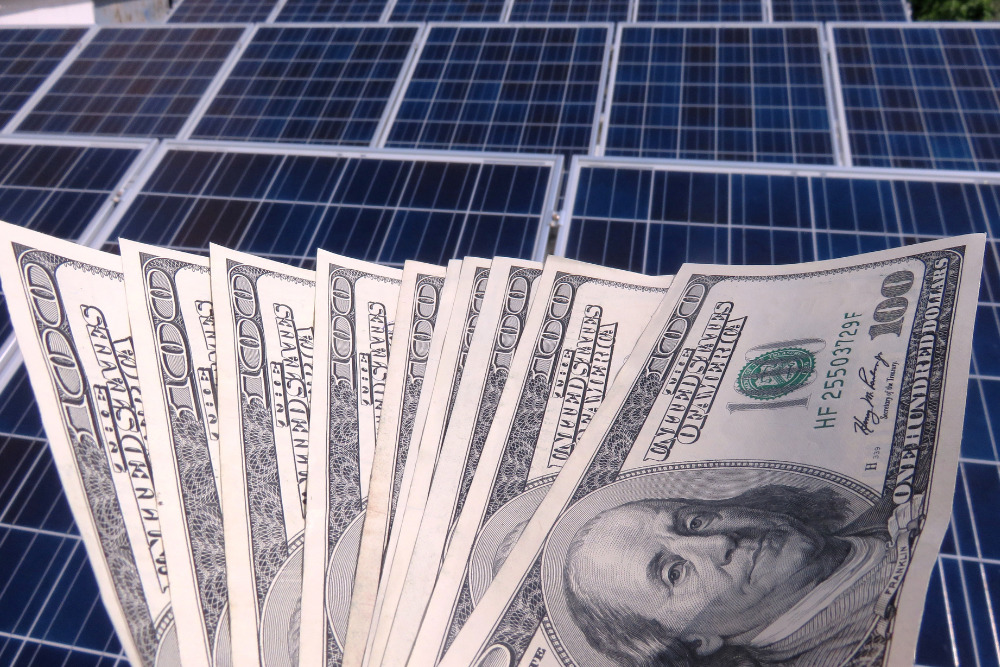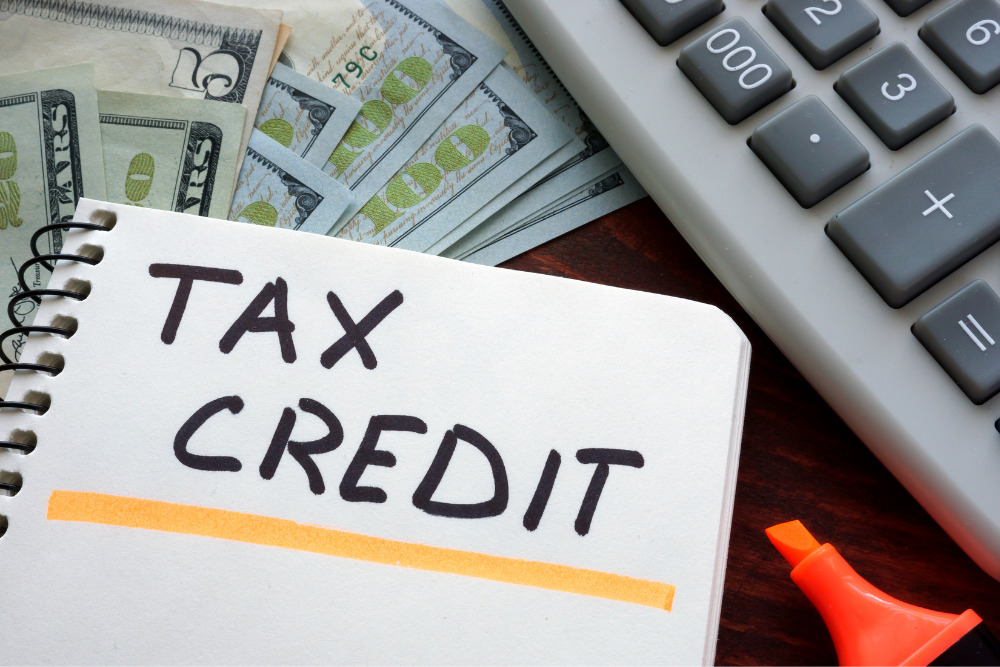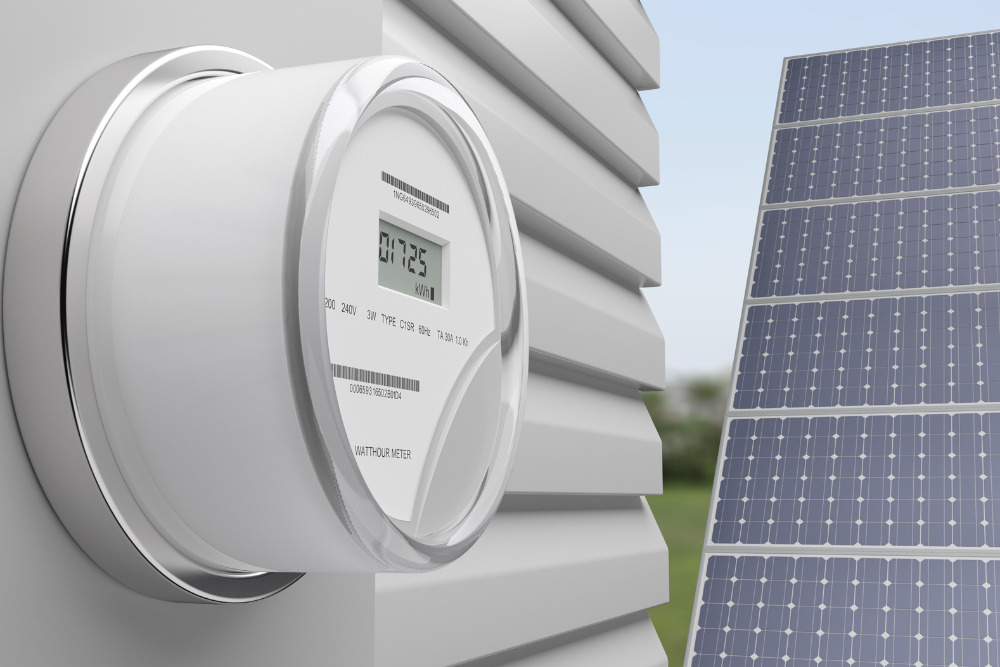
Solar panel rebates and incentives are forms of financial relief offered by the government (state and federal), solar companies, utility companies, nonprofits, and other organizations that aim to reduce the cost of solar panel systems.
What's The Difference Between Solar Tax Credits, Incentives, And Rebates?
Solar tax credits, rebates, and incentives reduce the cost of solar power systems. However, each is unique and works differently.
- Solar tax credits: These are the major solar incentives from the state and federal governments. They're available to businesses and homeowners who install solar within a tax year. They include:
- Federal investment tax credit (ITC): The federal solar tax credit is an investment tax credit for anyone who installs solar energy. It’s the most common tax credit from the federal government. With the ITC, you'll reduce your federal income taxes owed by 30% of the total cost of the system if you install solar between 2022 and 2032. Homeowners with a solar lease or PPA (power purchase agreement) don't qualify since they don’t actually own the system.
- Production tax credit (PTC): This tax cut is for business owners only, and it provides a tax credit for every kilowatt-hour of electricity you produce using solar or other clean energy sources.
- State tax credits - Most states have solar investment tax credits that function more or less the same as the federal ITC. Although they vary from state to state, the goal remains to reduce the cost of solar. For instance, California has a Solar Energy System Property Tax Exclusion that prevents an increase in the assessed value of a property when solar is installed.
- Incentives: Solar incentives come in many forms and vary depending on the provider. This means they may be federal, state, or local government-sponsored. Depending on the provider, they come in the form of tax incentives, subsidy loans, and tax reductions.
- Rebates: Rebates are upfront one-time cash backs that you earn for installing a solar system. Typically, they work like promotions encouraging solar installations. They are usually sponsored by utility companies, state governments or municipalities, or a solar installer or the manufacturer of your solar equipment. They generally run for a limited time and disappear once the target number of solar installations is achieved.
Solar tax credits, incentives, and rebates are excellent solutions for lowering solar system costs, and they can be “stacked” to save even more. Your solar company should be knowledgeable about all federal, state, and local incentives to help you get the biggest savings.
You can use the DSIRE database of state incentives using your zip code to find all available tax credits, rebates, and incentives and check for eligibility requirements.

Examples Of Solar Incentives
As mentioned, there are various types of incentives, and they vary from one state to another. The most popular include:
- Tax incentives: These include both state and federal tax incentives for qualifying taxpayers. Depending on the program, you'll enjoy tax cuts up to a certain percentage of the total cost you paid for your solar system. A tax credit reduces your income tax liability (taxes owed), where a tax deduction reduces your total taxable income before taxes are calculated. There may also be sales tax exemption incentives, depending on your area.
- Low-interest solar loans: Subsidized loans by state and local governments or nongovernmental organizations. They help you access quick funds for your solar project, including installation costs. For instance, with the Maine Energy Loan program, you can borrow up to $7,500 at a 5.99% interest rate for 10 years.
- Property tax relief: This is a state incentive in the form of a property tax exemption after a home improvement with a solar PV system. It stops a property tax increase due to increased home value after installing a solar system. Some states that offer property exemption incentives include Colorado, Florida, and Maryland.
- Solar Renewable Energy Certificates (SRECS): These are financial credits you get from your state government for every megawatt-hour of solar power your system produces. You can sell these SRECS to utilities that need to meet their renewable portfolio standard. They’re only available in states with SREC markets, and prices range from $5-400 depending on supply and demand.
- Performance-Based Incentives (PBIs): With PBIs, you get a flat rate for every kilowatt of solar electricity you produce. The best part is that you don't need to sell them through a market, unlike SRECS. The incentive rates are determined once you install your system.
- Net Metering: This is an excellent way to lower your monthly electric bill and pay off your solar photovoltaic system faster. With net metering programs, you get solar renewable energy credits for sending the excess energy you produce during the day to the grid. These credits offset your electric bill for energy used during the evening.

Examples Of Solar Rebates
As mentioned earlier, solar rebates are one-time financial incentives and vary from one state to another and within local governments and utility companies. Here are some examples from the state of California:
- Equity resilience incentives: This is a one-time rebate program that covers up to the entire cost of a solar system. The California state government, in conjunction with the Self Generation Incentive Program (SGIP), works with individuals from low-income communities and high-risk fire areas. Also, if you have experienced public safety power shut-offs more than twice, you're eligible for this program. The program equates to a rebate of between $850 and $1,000 per kWh.
- Self-Generation Incentive Program (SGIP): This is a rebate by the California Public Utilities Commission that gives upfront financial relief to businesses and homeowners for installing solar battery storage systems. The rebate depends on the size of your battery and declines as more people install batteries across the state. For instance, a 13.5-kilowatt-hour battery can earn you a rebate of about $2,700 at $200 per kWh.
- Disadvantaged Communities-Single-family Solar Homes (DAC-SASH): This is a rebate by the California Public Utilities Commission in collaboration with a nonprofit organization, Grid Alternatives. It offers up to 100% of the total cost of the solar system, but it's only for individuals from low-income households from low-income areas. To qualify for this program, you must meet specific requirements, including:
- Be a customer of one of the following; Southern California Edison (SCE), Pacific Gas and Electric (PG&E), or San Diego Gas & Electric (SDG&E).
- Must reside in the 25% of most economically vulnerable communities in the state or live in the tribal lands.
- Must meet the annual CARE and FERA guidelines on income qualifications.


